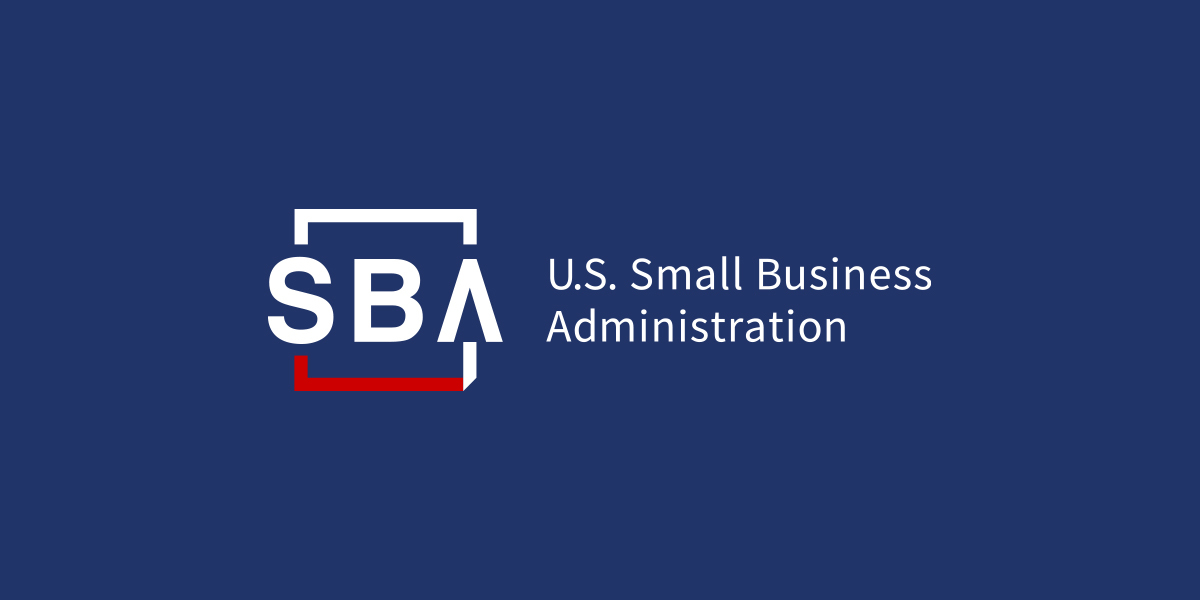Topic What is the federal id number on 1099-sa: The federal identification number is a crucial piece of information found on Form 1099-SA. This number is located on the left side, under the \"PAYER\'S federal identification number\" heading. It acts as a unique identifier for the payer and provides valuable details related to tax transactions. Having this number helps individuals accurately report their income and ensures compliance with IRS regulations. So, understanding and including this federal id number on Form 1099-SA is essential for a smooth tax filing process.
Table of Content
- What is the federal identification number on the 1099-SA form?
- What is a 1099-SA form?
- Why is the federal identification number important on a 1099-SA form?
- Where can the federal identification number be found on a 1099-SA form?
- Is the federal identification number the same as the employer identification number (EIN)?
- Do all 1099-SA forms require a federal identification number?
- Can a recipient provide their own identification number on a 1099-SA form?
- Are there any penalties for not including the federal identification number on a 1099-SA form?
- Are there any additional identification numbers required on a 1099-SA form?
- How can a federal identification number be obtained for a 1099-SA form?
What is the federal identification number on the 1099-SA form?
The federal identification number on the 1099-SA form is the unique nine-digit number assigned to the payer. It is also known as the Employer Identification Number (EIN) or Tax Identification Number (TIN) and is used to identify the entity responsible for reporting and withholding taxes.
To find the federal identification number on the 1099-SA form, follow these steps:
1. Obtain a copy of the 1099-SA form from the payer or download it from the IRS website.
2. Look for the heading labeled \"PAYER\'S federal identification number\" on the left side of the form.
3. The federal identification number should be listed below this heading, typically in a format like XX-XXXXXXX. It may also be referred to as the EIN or TIN on the form.
4. Note down the nine-digit number, as this is the federal identification number for the payer who issued the form.
It is important to accurately report this number when filing your taxes or providing it to relevant parties. The Federal ID Number is used by the IRS to track and identify tax-related activities associated with the payer listed on the 1099-SA form.
READ MORE:
What is a 1099-SA form?
A 1099-SA form is a tax form that is used to report distributions made from a Health Savings Account (HSA), Archer Medical Savings Account (Archer MSA), or Medicare Advantage Medical Savings Account (MA MSA). It is typically issued by the financial institution that administers the account.
Here are the steps to understand the 1099-SA form:
1. Purpose: The 1099-SA form is used to report any distributions made from your HSA, Archer MSA, or MA MSA during the tax year. It is important for tax purposes as it helps determine if any portion of the distribution is subject to income taxes or penalties.
2. Information Included: The form includes important information related to the distribution, such as the account holder\'s name, address, and Social Security number or taxpayer identification number (TIN). It also contains details about the financial institution that issued the form, including their name, address, and identification number.
3. Box 1: This box shows the total amount of distributions made from the account during the tax year. The amount represents the sum of all withdrawals or payments made from the account.
4. Box 2: If any part of the distribution is for qualified medical expenses, this box will show the total amount that qualifies as tax-free. This amount can be used as a deduction on your tax return.
5. Box 3: This box indicates whether the distribution is a normal distribution or an excess contribution distribution. Normal distributions are typically made for qualified medical expenses, while excess contribution distributions occur when you withdraw more money from the account than you have contributed.
6. Box 4: If there is an excess contribution distribution, this box will show the total amount of the excess contribution that is subject to income taxes and penalties. This amount should be reported on your tax return as taxable income.
7. Box 5: If any earnings or interest were distributed from the account, this box will show the total taxable amount. This amount should also be reported as income on your tax return.
8. Box 6: If any portion of the distribution is subject to a 10% additional tax penalty, it will be indicated in this box. The penalty may apply if the distribution was not used for qualified medical expenses or if you withdrew funds before reaching the eligible age.
9. Reporting: The information from the 1099-SA form needs to be reported on your individual income tax return. The relevant amounts should be entered on the appropriate lines of Form 8889, which is used to report HSA contributions and distributions.
It\'s important to keep a copy of the 1099-SA form for your records and consult a tax professional if you have specific questions or concerns regarding your HSA or the related tax implications.
Why is the federal identification number important on a 1099-SA form?
The federal identification number is important on a 1099-SA form for several reasons:
1. Identification of the Payer: The federal identification number, also known as the Employer Identification Number (EIN), is used to identify the entity or organization that is issuing the 1099-SA form. This allows the IRS to keep track of who is providing the form and ensures accurate record-keeping.
2. Reporting Income: The 1099-SA form is used to report distributions from a Health Savings Account (HSA), Archer Medical Savings Account (MSA), or Medicare Advantage Medical Savings Account (MA MSA). The federal identification number helps the IRS match the information reported on the form with the payer\'s tax records and ensures that the reported income is accurate.
3. Tax Filing: The recipient of the 1099-SA form uses the federal identification number when filing their tax return. This number helps the IRS to properly associate the income reported on the form with the taxpayer and ensures that the income is included in the correct tax calculations.
Overall, the federal identification number on a 1099-SA form is important for accurate identification, income reporting, and tax filing purposes. It helps the IRS track and verify the information provided on the form, ensuring compliance with tax regulations.
Where can the federal identification number be found on a 1099-SA form?
The federal identification number can be found on a 1099-SA form in the following way:
1. Locate the 1099-SA form. This form is usually received by individuals who made distributions from a Health Savings Account (HSA), Archer Medical Savings Account (MSA), or Medicare Advantage MSA.
2. Look for the heading \"PAYER\'S federal identification number\" on the left side of the form. This section should be clearly labeled and easily identifiable.
3. Underneath this heading, you should find the federal identification number for the entity that issued the 1099-SA form to you. It is the identification number of the organization or institution that made the distributions from the mentioned accounts.
4. The federal identification number typically consists of nine digits and is used by the Internal Revenue Service (IRS) for identification purposes. It serves as a unique identifier for the entity responsible for reporting the distributions on the form.
Note: If you are unable to locate the federal identification number on your 1099-SA form, you may need to contact the organization or institution that provided you with the form for further assistance. They should be able to provide you with the necessary information.
Is the federal identification number the same as the employer identification number (EIN)?
Yes, the federal identification number is the same as the employer identification number (EIN).
Step 1: When referring to the federal identification number on a form like 1099-SA, it is usually the EIN of the payer or the company that is issuing the form.
Step 2: The EIN is a unique nine-digit number assigned by the IRS to identify a business entity for tax purposes. It is similar to a social security number for an individual.
Step 3: The EIN must be provided by businesses that have employees, file tax returns, or operate as a partnership or corporation.
Step 4: On a 1099-SA form, the federal identification number (EIN) of the payer can usually be found on the left side under the heading of \"PAYER\'S federal identification number.\"
Step 5: The recipient of the 1099-SA form does not need to provide their own federal identification number (EIN) because it is the payer\'s responsibility to report their own identification number on the form.
In summary, the federal identification number on a 1099-SA form refers to the employer identification number (EIN) of the payer or the company issuing the form.
_HOOK_
Do all 1099-SA forms require a federal identification number?
No, not all 1099-SA forms require a federal identification number.
The 1099-SA form is used to report distributions from Health Savings Accounts (HSAs), Archer Medical Savings Accounts (MSAs), or Medicare Advantage MSAs.
If you received a distribution from one of these accounts, the payer should provide you with a 1099-SA form which will typically include the following information:
- Payer\'s federal identification number: This is the identification number of the entity or organization making the distribution. It is used for tax reporting purposes.
- Recipient\'s identification number: This is your identification number, such as your social security number or employer identification number (EIN). It is used to associate the distribution with your tax records.
- Recipient\'s name: Your name will be listed on the 1099-SA form to identify you as the recipient of the distribution.
So, while the 1099-SA form does require the payer\'s federal identification number and the recipient\'s identification number, it is not necessary for all 1099-SA forms to have a federal identification number. It depends on the specific circumstances and the organization making the distribution.
Can a recipient provide their own identification number on a 1099-SA form?
No, a recipient cannot provide their own identification number on a 1099-SA form. The 1099-SA form is used to report distributions from Health Savings Accounts (HSAs), Archer Medical Savings Accounts (MSAs), or Medicare Advantage Medical Savings Accounts (MSAs). The form is issued by the payer or financial institution responsible for the account.
The federal identification number mentioned in the search results refers to the payer\'s identification number, which is typically their Employer Identification Number (EIN). This number is used by the Internal Revenue Service (IRS) to identify the organization or person responsible for issuing the form.
On the 1099-SA form, there is a section for the recipient\'s name, address, and identification number. The recipient\'s identification number is usually their Social Security Number (SSN) or Individual Taxpayer Identification Number (ITIN). This information is provided by the recipient to ensure accurate reporting and matching of the form to their tax return.
It is important for the recipient to carefully review the form for accuracy and make sure that their information, including their identification number, is correctly reported. If there are any discrepancies or errors, they should contact the payer or financial institution to have the necessary corrections made.
Overall, for a 1099-SA form, the recipient does not provide their own identification number; rather, the payer or financial institution provides their identification number, and the recipient provides their own identification number.
Are there any penalties for not including the federal identification number on a 1099-SA form?
Yes, there can be penalties for failing to include the federal identification number on a 1099-SA form. The 1099-SA form is used to report distributions made from a Health Savings Account (HSA), Archer Medical Savings Account (Archer MSA), or Medicare Advantage Medical Savings Account (MA MSA).
The federal identification number, also known as the payer\'s identification number, is typically the employer identification number (EIN) or the Social Security number of the organization or individual distributing the funds. It is used by the Internal Revenue Service (IRS) to identify the payer and match the information reported on the form with the payer\'s tax return.
If you fail to include the federal identification number on a 1099-SA form, the IRS may impose penalties. The penalties can vary depending on the specific situation, such as whether the failure was intentional or due to negligence. Generally, the penalty for not including the federal identification number on a 1099-SA form is $270 per form, with a maximum penalty of $3,339,000 per year.
It is important to ensure that the federal identification number is accurately included on the 1099-SA form to avoid these penalties. If you are unsure about the correct federal identification number, you should contact the payer or consult with a tax professional to ensure compliance with IRS requirements.
Are there any additional identification numbers required on a 1099-SA form?
Based on the search results, it seems that the only identification number required on a 1099-SA form is the PAYER\'S federal identification number. There is no mention of any additional identification numbers that need to be included on the form.
READ MORE:
How can a federal identification number be obtained for a 1099-SA form?
To obtain a federal identification number for a 1099-SA form, follow these steps:
1. Determine if you are eligible: A federal identification number is typically required for entities that are acting as payers or employers. If you are an individual who received a Form 1099-SA and are not the payer, you do not need to obtain a federal identification number.
2. Determine the type of federal identification number you need: There are two common types of federal identification numbers: Social Security number (SSN) and Employer Identification Number (EIN).
- If you are an individual acting as a payer and using your own personal funds, you can use your SSN as the federal identification number on the 1099-SA form.
- If you are a business or organization acting as a payer, you will generally need to obtain an EIN from the IRS. This is typically applicable for employers, corporations, partnerships, and self-employed individuals who have employees.
3. Obtain an SSN: If you are an individual acting as a payer and using your SSN as the federal identification number, you do not need to take any additional steps. Your SSN should already be assigned to you by the Social Security Administration.
4. Obtain an EIN: If you are a business or organization acting as a payer and need to obtain an EIN, you can do so by following these steps:
- Go to the IRS website: Visit the official website of the Internal Revenue Service (IRS) at www.irs.gov.
- Complete Form SS-4: Access Form SS-4, Application for Employer Identification Number, either online or by downloading and filling out the form manually. This form is used to apply for an EIN.
- Fill out the form: Provide the necessary information requested on Form SS-4, such as your entity type, name, address, and the reason for applying. Make sure to be accurate and provide complete information to avoid delays or rejections.
- Submit the form: Once you have completed Form SS-4, you can submit it according to the instructions provided on the form. Online submissions are typically processed faster, while mailing the form may take longer.
- Wait for confirmation: Upon successful submission, the IRS will process your application and assign you an EIN. This typically takes a few weeks, but you should receive your EIN confirmation letter by mail.
5. Use the EIN on the 1099-SA form: Once you have obtained an EIN, you can use it as the federal identification number on the 1099-SA form for future reporting. Ensure that you accurately enter the EIN in the designated field under the heading \"PAYER\'S federal identification number.\"
Remember to consult with a tax professional or refer to IRS resources for specific guidance applicable to your situation.
_HOOK_



